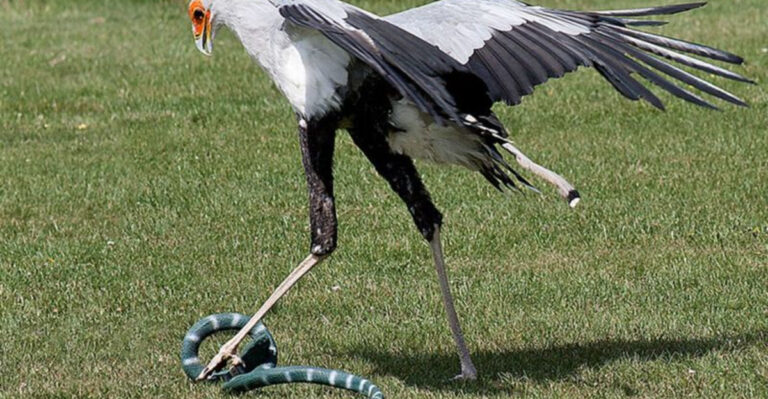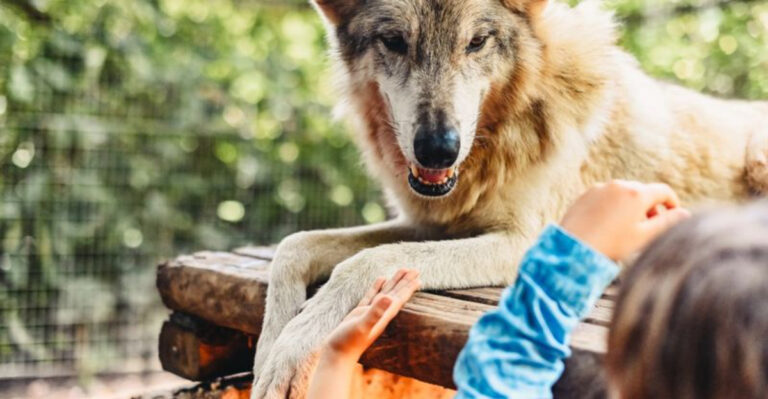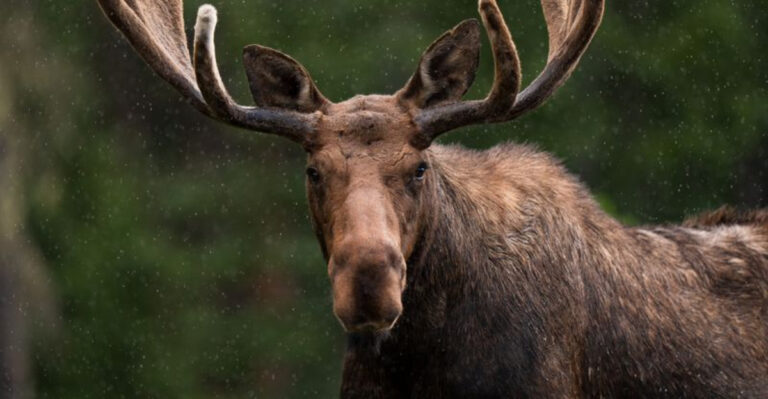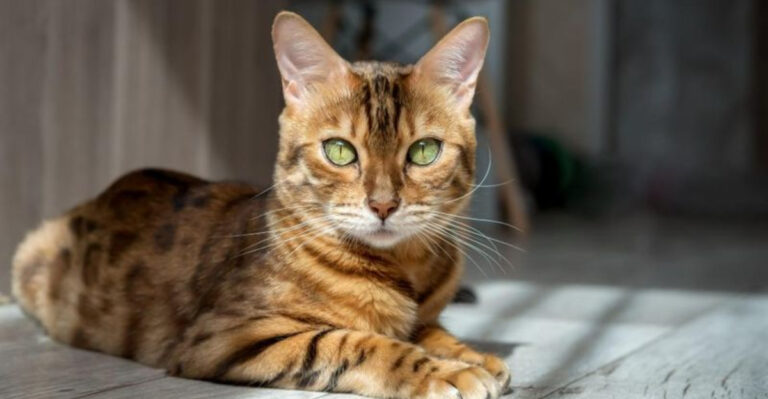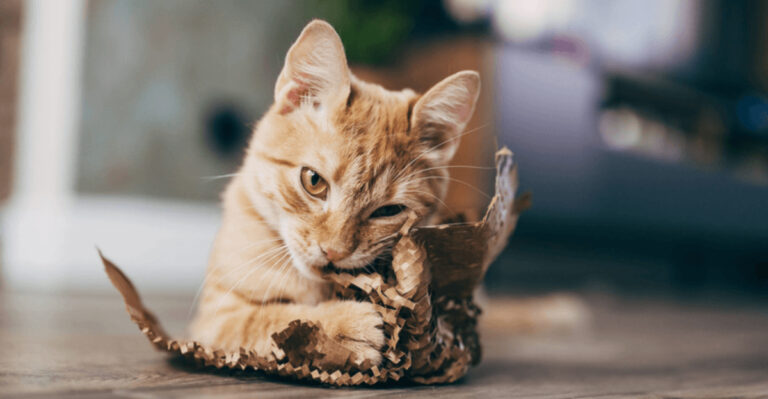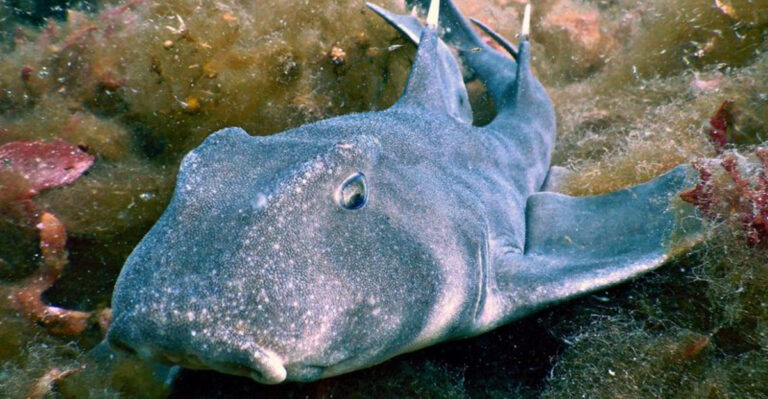15 Flowers That Attract Honeybees Like Magnets
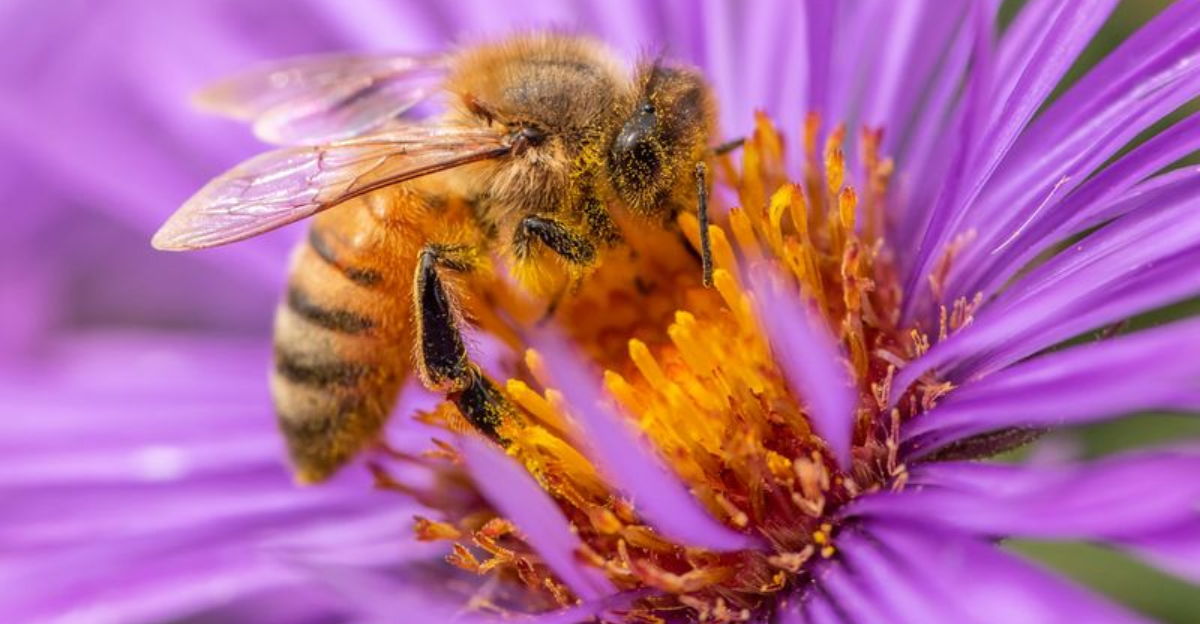
Honeybees play a crucial role in our ecosystem by pollinating plants that provide food for both humans and wildlife.
Planting bee-friendly flowers in your garden creates a haven for these important pollinators while adding vibrant colors and delightful fragrances to your outdoor space.
Whether you have a sprawling garden or a small balcony with potted plants, these flowers will turn your green space into a buzzing paradise for honeybees.
1. Lavender: Purple Heaven For Bees
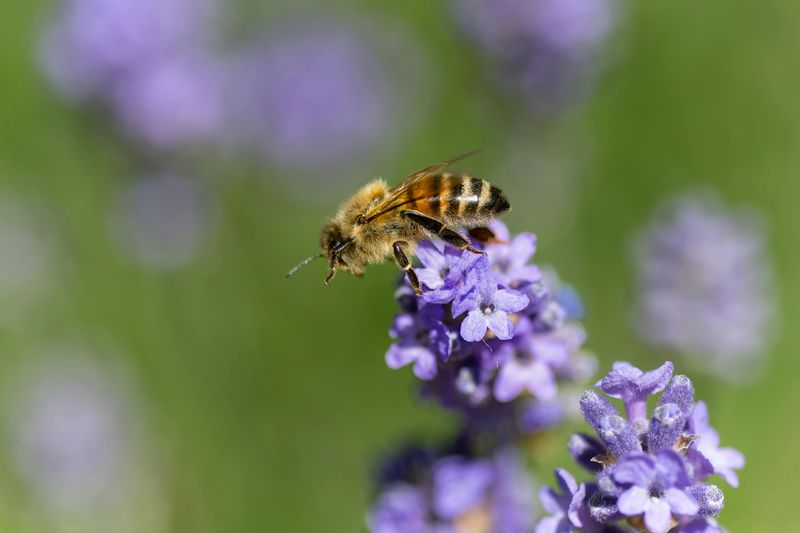
Bees can’t resist lavender’s sweet, calming fragrance that wafts through summer air. The purple spikes provide perfect landing pads for busy pollinators, offering abundant nectar rewards.
Home gardeners love lavender for its drought tolerance and versatility. Plant it along walkways or in containers where you can enjoy the pleasant hum of contented bees gathering nectar from dawn till dusk.
2. Sunflowers: Towering Beacons Of Gold
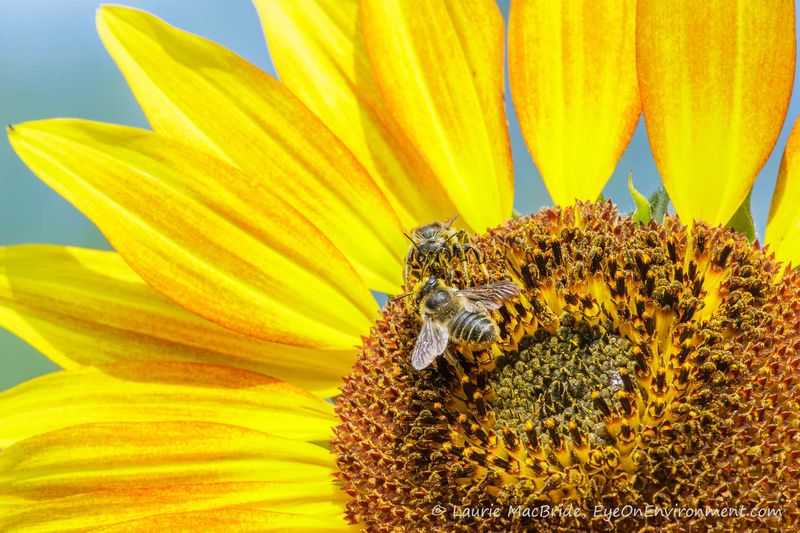
Standing tall like natural lighthouses, sunflowers broadcast their bee-friendly status across the garden. Their large central disks contain thousands of tiny individual flowers, each offering a nutritious meal.
Bees become absolutely mesmerized by these golden giants. Watch as they methodically work their way around the flower head, collecting both pollen and nectar in an efficient harvesting dance that can last for hours.
3. Borage: The Blue Star Surprise
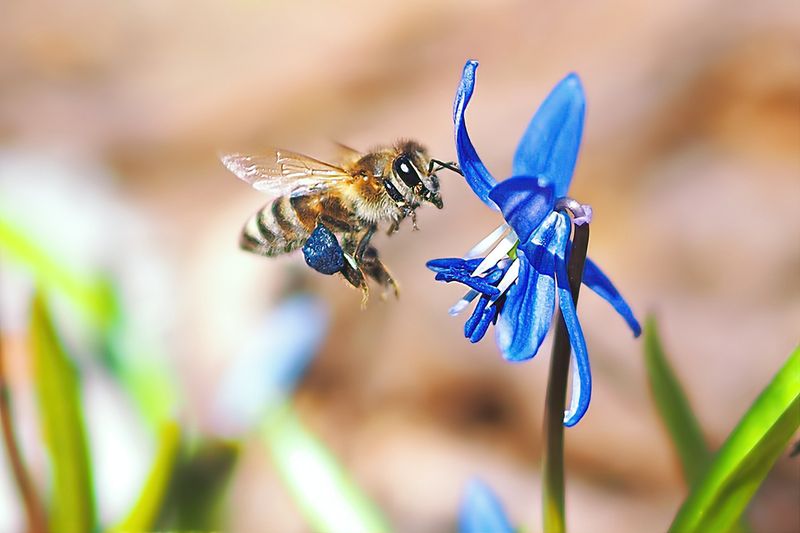
Borage might be the best-kept secret in bee-friendly gardening. Those star-shaped blue flowers hanging like little bells contain nectar that’s irresistible to honeybees. They’ll visit these blossoms repeatedly throughout the day.
Gardeners appreciate borage’s self-seeding nature and drought resistance. Once established, it creates a continuous buffet for pollinators from late spring through fall, with each plant producing hundreds of nectar-rich blooms.
4. Coneflowers: Native Pollinator Magnets
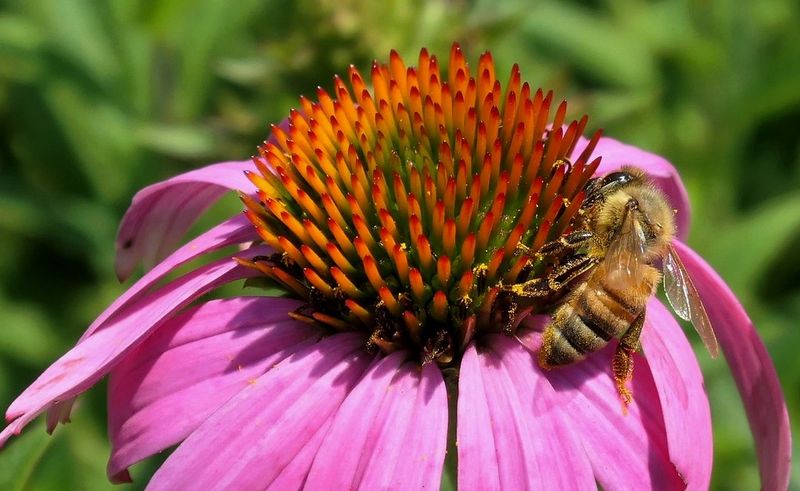
Honeybees flock to coneflowers for their abundant nectar and easily accessible pollen. The distinctive raised center creates a perfect landing platform where multiple bees can feast simultaneously.
Beyond their pollinator appeal, these hardy native perennials withstand summer heat and drought with remarkable resilience. Plant them in sunny spots throughout your garden, and enjoy watching bees hover excitedly before settling onto the spiky centers.
5. Oregano: Herb Garden Buzzing Spot
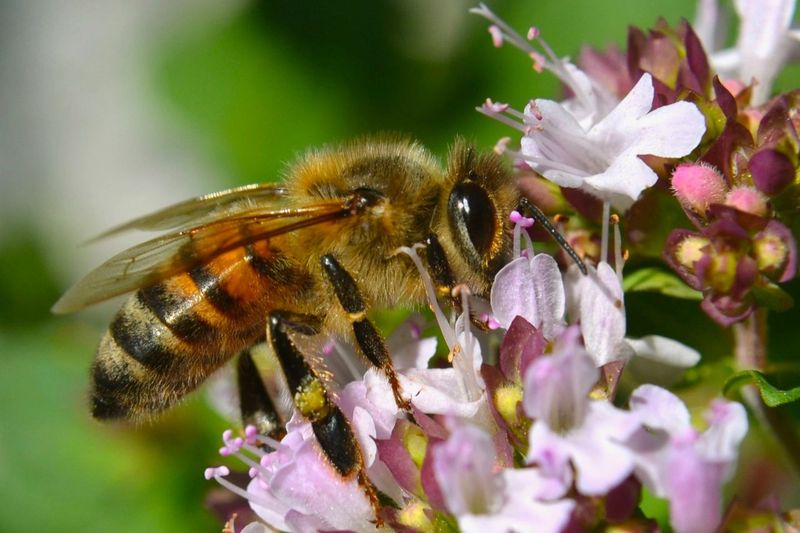
When oregano blooms, the tiny white or purple flowers transform this culinary herb into a honeybee paradise. Unlike many flowering plants, oregano produces nectar throughout the day, ensuring constant bee traffic.
Allow some of your oregano plants to flower instead of harvesting all the leaves. The delicate blooms create a frothy cloud above the aromatic foliage, attracting dozens of honeybees that will work tirelessly from sunrise to sunset.
6. Cosmos: Daisy-Like Delights
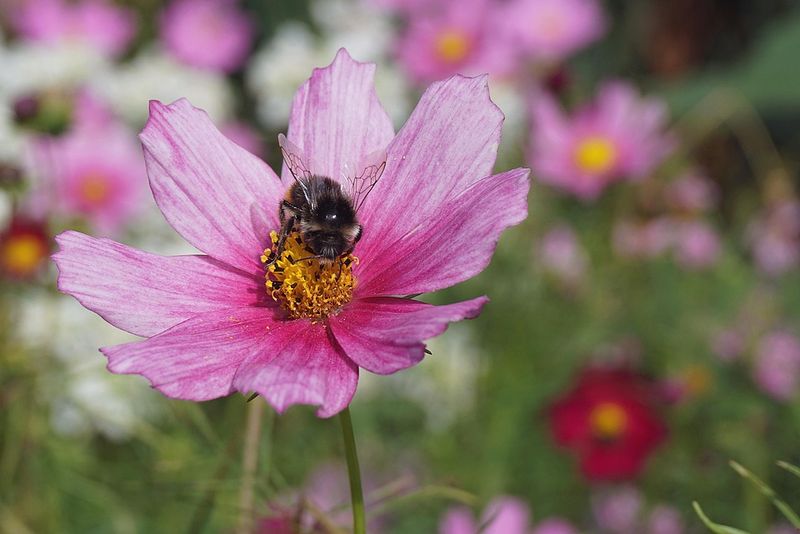
Honeybees zoom straight to cosmos flowers, drawn by their bright colors and easy-to-access nectar. The simple, open flower structure allows bees to land and feed efficiently without struggling through complex petal arrangements.
These annual flowers bloom profusely from early summer until frost. Plant them in drifts for maximum visual impact and bee appeal. Their feathery foliage adds a delicate texture to gardens while supporting countless buzzing visitors throughout the growing season.
7. Catmint: Purple Cloud Of Nectar
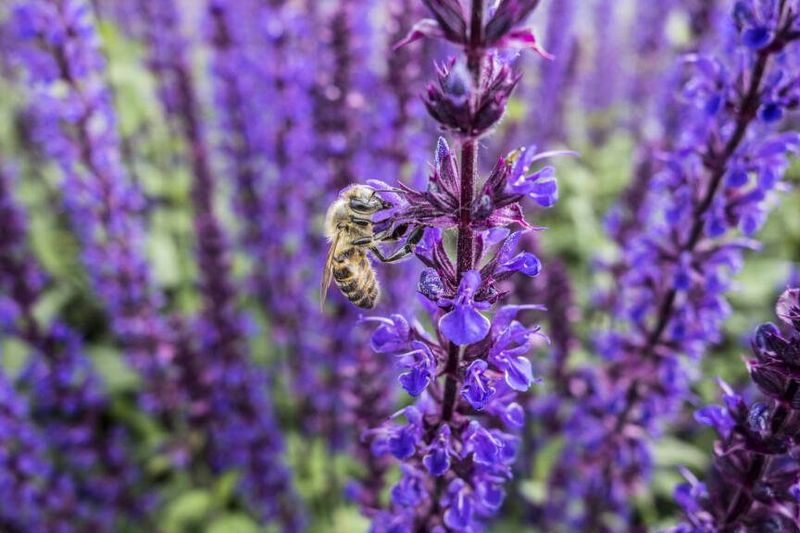
Catmint creates a purple haze of blossoms that honeybees find utterly irresistible. The long-blooming perennial offers nectar for weeks longer than many other garden plants, becoming a reliable food source during summer.
Morning reveals the most intense bee activity around catmint. Position these plants along garden borders where you can witness the fascinating pollination process up close. The aromatic foliage adds sensory appeal for humans while supporting essential pollinators.
8. Bee Balm: Nature’s Perfect Design
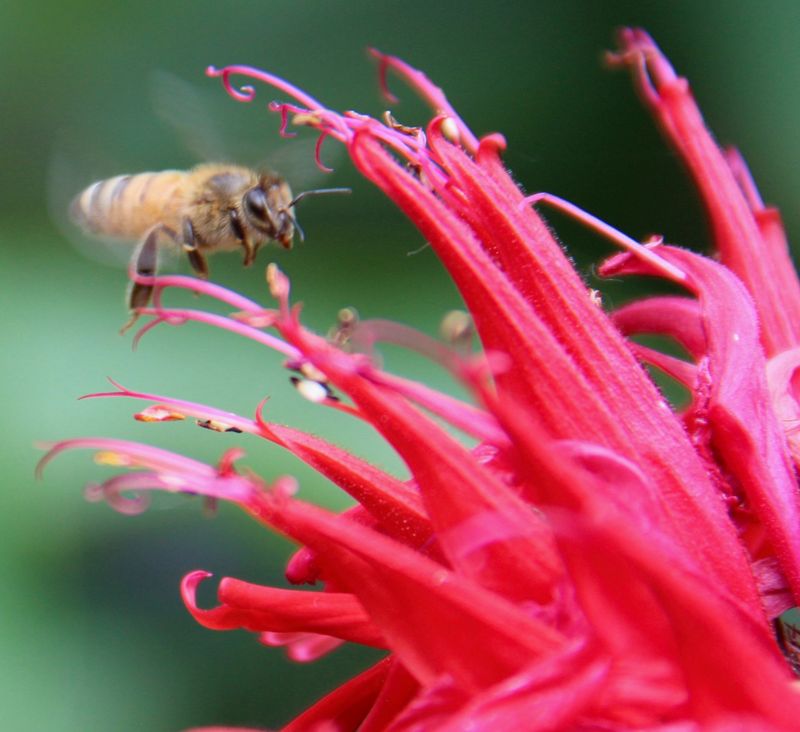
Aptly named, bee balm features whorls of tubular flowers that evolved specifically to attract pollinators. Honeybees hover excitedly around these vibrant blooms, drawn by both abundant nectar and the plant’s minty fragrance.
Native to North America, bee balm creates dramatic splashes of red, pink, or purple in summer gardens. Plant it in groups of three or more to create significant pollinator impact. The unique flower structure provides perfect access for honeybees’ specialized feeding parts.
9. Linden Trees: Heavenly Honeybee Haven
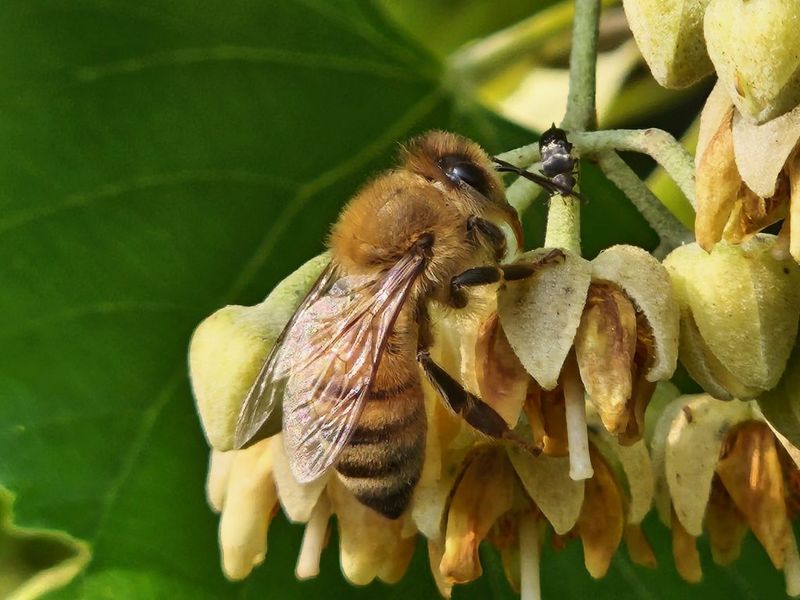
When linden trees bloom, the air fills with an intoxicating sweet fragrance and a symphony of buzzing. Honeybees travel miles to visit these nectar powerhouses, which produce some of the most prized honey varieties worldwide.
A single mature linden can support thousands of bees simultaneously. The pale yellow-green blossoms hang in clusters, creating spectacular feeding stations. Standing beneath a flowering linden on a warm June morning reveals one of nature’s most impressive pollinator spectacles.
10. Crocus: First Feast Of Spring
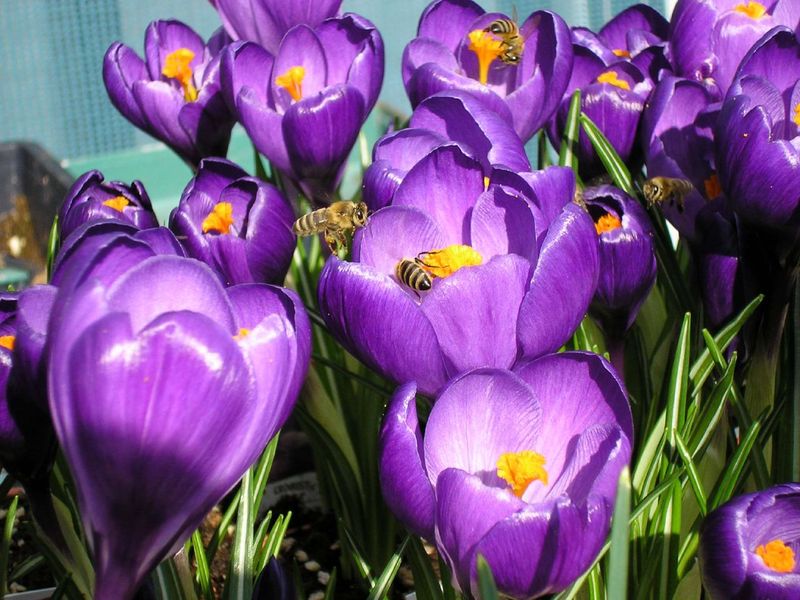
Nothing signals winter’s end to hungry honeybees like the appearance of crocus blooms pushing through late snow. These early risers provide critical first nutrition when bee colonies have depleted winter stores.
The cup-shaped flowers open wide on sunny days, revealing golden pollen-laden stamens that bees gather eagerly. Plant hundreds of crocus bulbs throughout lawn areas for a spectacular spring display that nourishes bees when few other flowers are available.
11. Aster: Autumn’s Final Banquet
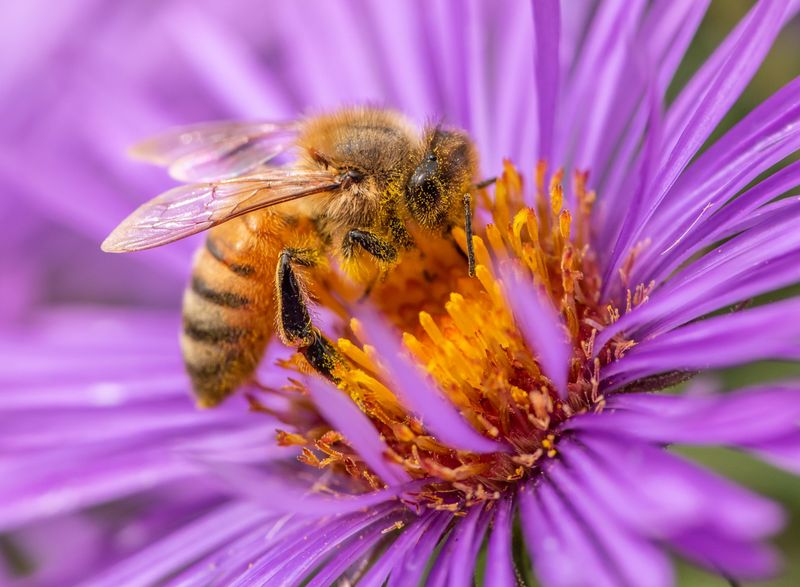
As summer flowers fade, asters burst into bloom, providing crucial late-season nourishment for honeybees preparing for winter. Their daisy-like flowers in purples, pinks, and whites become bustling feeding stations during autumn days.
Bees collect both nectar and pollen from asters. The abundant tiny florets in each flower center offer efficient foraging opportunities during shorter fall days. Plant several varieties with different blooming times to extend the feeding season through the first frost.
12. Sedum: Succulent Nectar Platforms
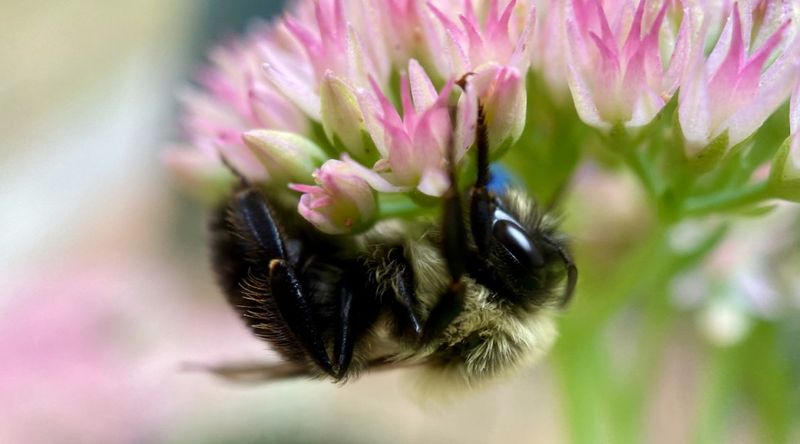
Sedum’s flat-topped flower clusters serve as perfect honeybee landing pads in late summer when many other blooms have faded. The star-shaped individual florets open gradually, providing weeks of reliable nectar.
Watch as bees methodically work their way across the flower heads, gathering food efficiently. These drought-tolerant succulents require minimal care while delivering maximum pollinator benefits. Their structural seedheads extend garden interest through winter after feeding countless hungry bees.
13. Cilantro: Surprise Pollinator Pleaser
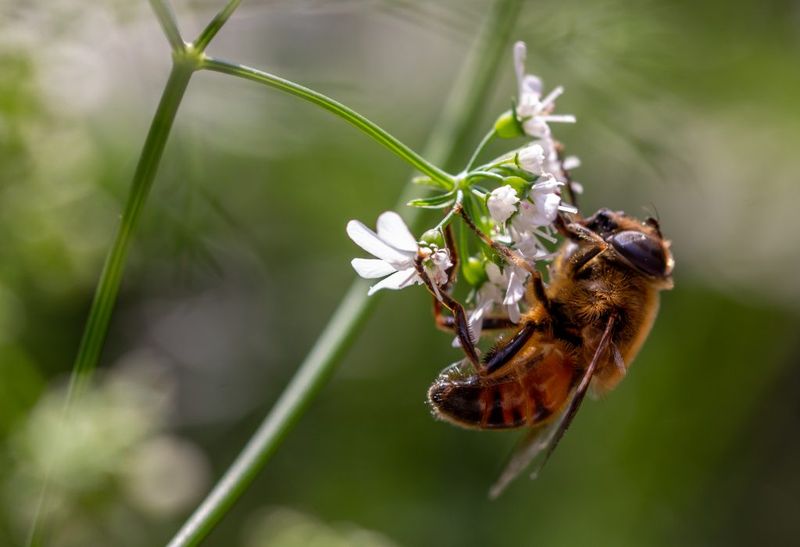
When allowed to flower, humble cilantro transforms into a honeybee hotspot. The delicate white blooms appear in umbrella-like clusters that bees find irresistible during the herb’s bolting stage.
Instead of pulling cilantro when it starts to flower, consider leaving some plants for pollinators. The tiny blossoms produce surprising amounts of nectar, attracting honeybees by the dozens. As a bonus, the plants will self-seed, ensuring future generations of this pollinator-friendly herb.
14. Calendula: Golden Sunshine For Bees
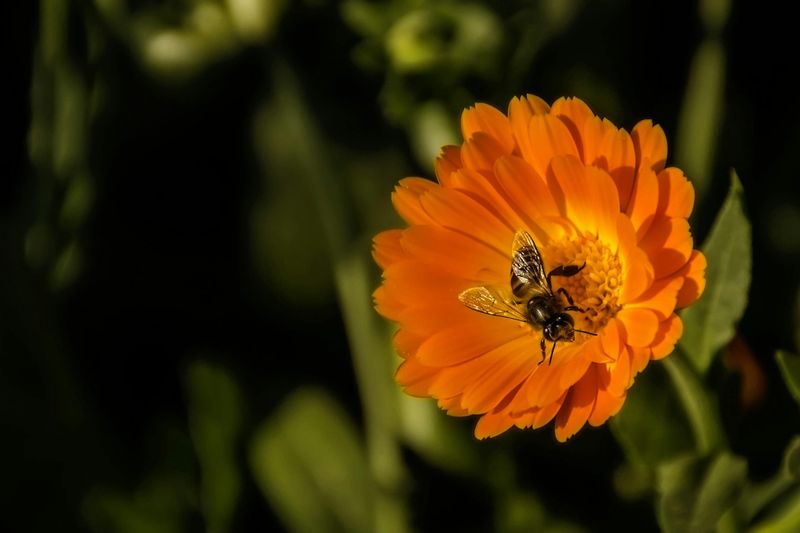
Calendula’s bright orange and yellow blossoms shine like miniature suns, broadcasting their bee-friendly status across the garden. These easy-growing flowers produce copious amounts of pollen that honeybees eagerly collect in their specialized leg baskets.
Often called pot marigolds, calendulas bloom from spring until frost with minimal care. Their open flower structure allows bees easy access to both nectar and pollen. Plant them throughout vegetable gardens to attract pollinators to your food crops.
15. Clover: Humble Honeybee Superfood
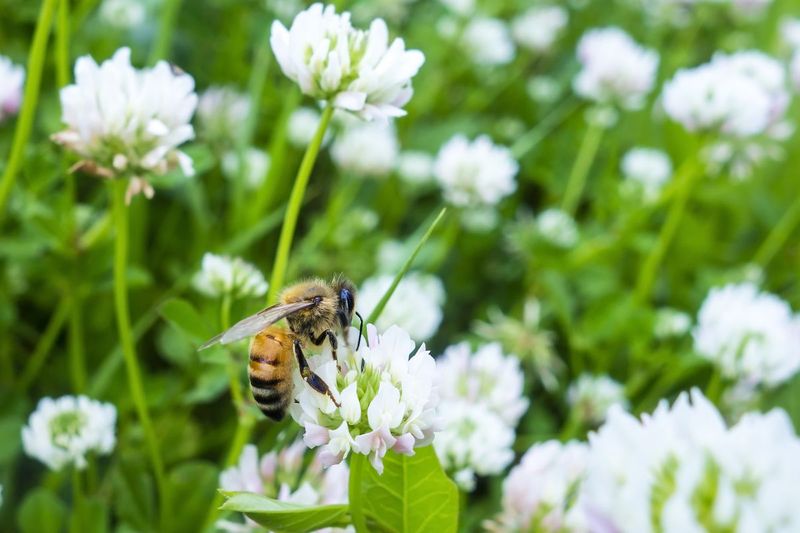
Don’t dismiss clover as merely a lawn weed! These modest flowers rank among the most important food sources for honeybees worldwide. The tight flower clusters contain surprisingly deep nectar reserves that produce distinctive, light-colored honey.
Consider leaving patches of clover unmowed in your lawn or dedicating a section of your property to this pollinator powerhouse. White, red, and crimson varieties all attract bees, with some varieties blooming continuously from spring through fall.

